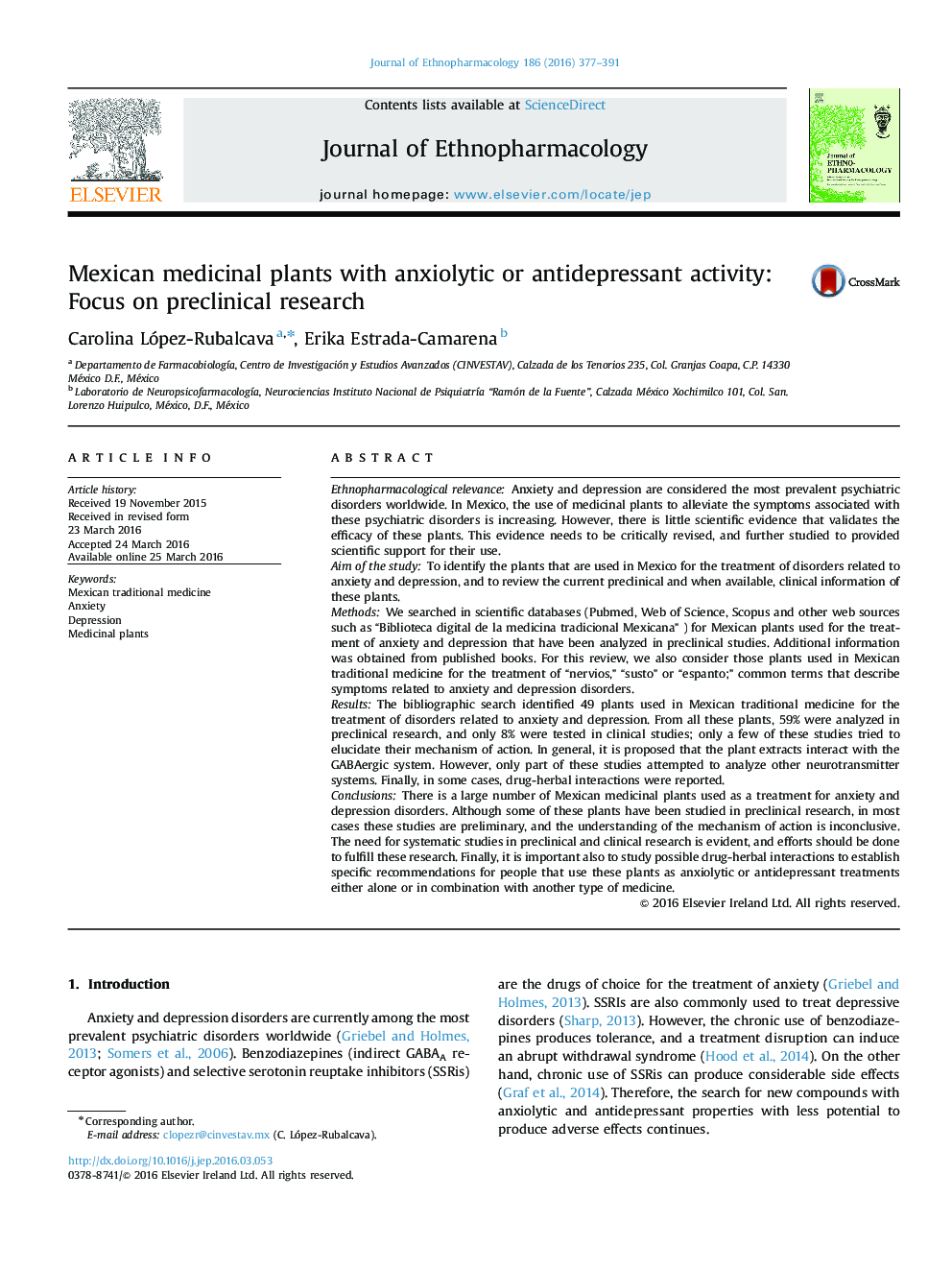| Article ID | Journal | Published Year | Pages | File Type |
|---|---|---|---|---|
| 2544732 | Journal of Ethnopharmacology | 2016 | 15 Pages |
Ethnopharmacological relevanceAnxiety and depression are considered the most prevalent psychiatric disorders worldwide. In Mexico, the use of medicinal plants to alleviate the symptoms associated with these psychiatric disorders is increasing. However, there is little scientific evidence that validates the efficacy of these plants. This evidence needs to be critically revised, and further studied to provided scientific support for their use.Aim of the studyTo identify the plants that are used in Mexico for the treatment of disorders related to anxiety and depression, and to review the current preclinical and when available, clinical information of these plants.MethodsWe searched in scientific databases (Pubmed, Web of Science, Scopus and other web sources such as “Biblioteca digital de la medicina tradicional Mexicana” ) for Mexican plants used for the treatment of anxiety and depression that have been analyzed in preclinical studies. Additional information was obtained from published books. For this review, we also consider those plants used in Mexican traditional medicine for the treatment of “nervios,” “susto” or “espanto;” common terms that describe symptoms related to anxiety and depression disorders.ResultsThe bibliographic search identified 49 plants used in Mexican traditional medicine for the treatment of disorders related to anxiety and depression. From all these plants, 59% were analyzed in preclinical research, and only 8% were tested in clinical studies; only a few of these studies tried to elucidate their mechanism of action. In general, it is proposed that the plant extracts interact with the GABAergic system. However, only part of these studies attempted to analyze other neurotransmitter systems. Finally, in some cases, drug-herbal interactions were reported.ConclusionsThere is a large number of Mexican medicinal plants used as a treatment for anxiety and depression disorders. Although some of these plants have been studied in preclinical research, in most cases these studies are preliminary, and the understanding of the mechanism of action is inconclusive. The need for systematic studies in preclinical and clinical research is evident, and efforts should be done to fulfill these research. Finally, it is important also to study possible drug-herbal interactions to establish specific recommendations for people that use these plants as anxiolytic or antidepressant treatments either alone or in combination with another type of medicine.
Graphical abstractFigure optionsDownload full-size imageDownload high-quality image (312 K)Download as PowerPoint slide
